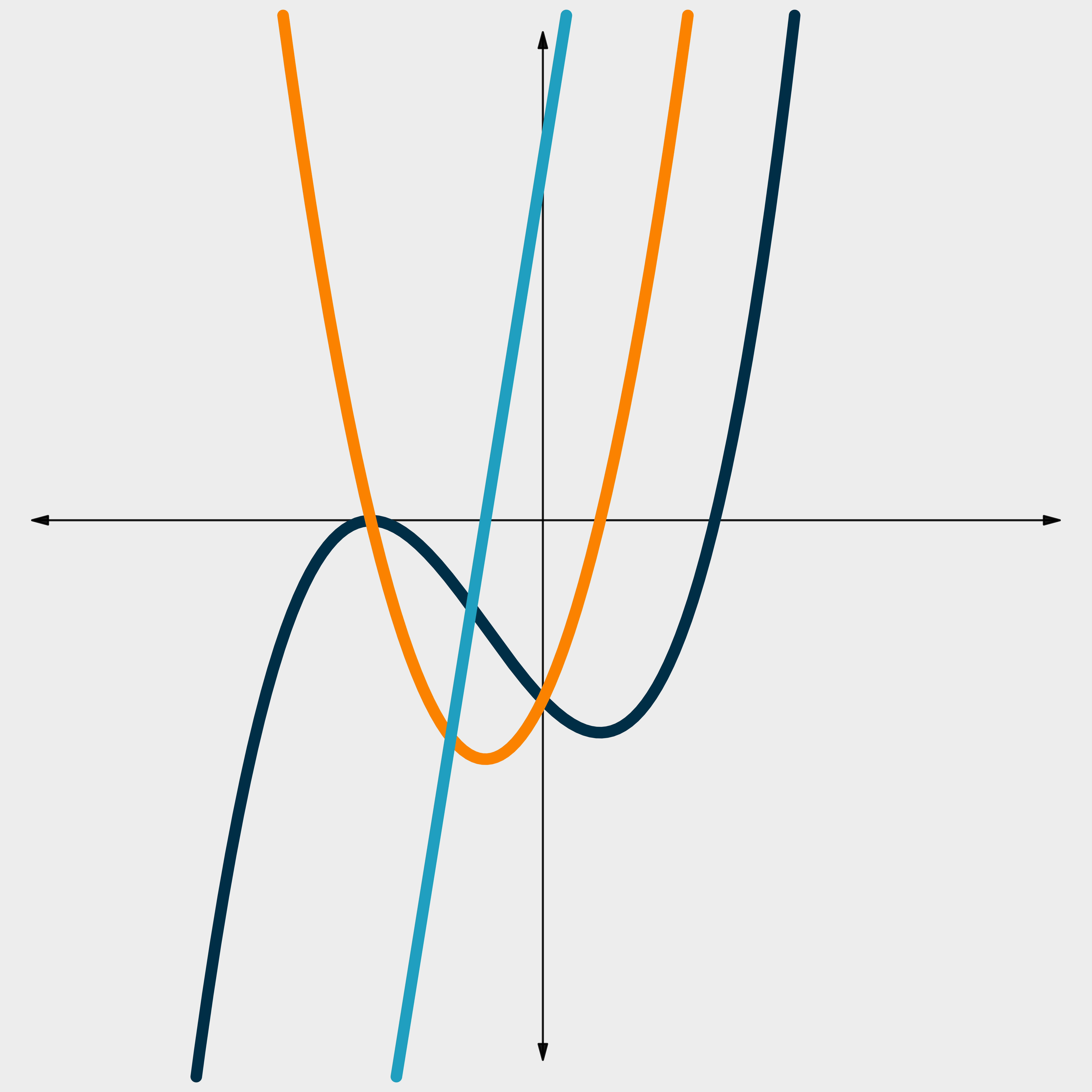
The goal of this lesson is to help students understand the relationships between a function and its first and second derivatives. Students will analyze graphs recalling their knowledge of sketching graphs by hand using the first and second derivatives and apply their graphical knowledge verbally through... Read more »
Connecting Functions and Their Derivatives
Grade Level
Course
Subject
Standards

In this lesson, students will explore, learn, and connect concepts of Intermolecular Forces (IMFs) to physical phenomena. Prerequisite knowledge would be that bonding exists (that is, there is continuum from non-polar covalent to ionic bonding) as well as the formation of ions and electron configuration.... Read more »
Intermolecular Forces
Grade Level
Subject
Course
Standards

Students explore causes for the decline in number of giant catfish of the Mekong River system and interpret a set of data taken from 2003 regarding the size and mass of catfish that were caught and tagged. They will display their knowledge in the form of tables, graphs, and pictures. Read more »
Tracking Population Decline Using Biology and Algebra
Grade Level
Subject
Course
Standards

Students will use primary sources to explore and help them explain the Boston Massacre. They will compare two images depicting the event and draw conclusions about what happened based on what the artist chose to depict. Students will examine the roles of perspective and propaganda with regard to the... Read more »
Primary sources
Subject
Course
Grade Level
Standards

This lesson addresses rules for exponents. Students will discover the rules for exponents through an exploration of numerical expressions and visual representations of exponents. Prerequisites for this lesson include an understanding of the components of an exponent. This lesson allows students to explore... Read more »
Exponent Rules: Digital Breakout
Course
Subject
Grade Level
Standards

Students will use DNA processes such as replication, transcription, and translation to study the differences between healthy individuals and those with a genetic disorder (in this case, cystic fibrosis). Students will apply this knowledge to the inheritance of traits through the use of Punnett squares. Read more »
DNA Processes
Grade Level
Subject
Course
Standards

This lesson is an introduction to polynomials. Solving polynomials is not included in this lesson, and would be the next lesson after this one. Academic language as well as patterns in polynomial family functions is explored. Prerequisite knowledge would be an understanding of functions and exponents... Read more »
Polynomials
Grade Level
Course
Subject
Standards

This lesson is intended to introduce the unit circle, leading into the concept of radians as a unit rather than degrees. This lesson is intended to introduce the concept at the beginning of the unit, but it could also work as remediation if students are just not getting it. Read more »
The Unit Circle / Trigonometry
Grade Level
Course
Subject
Standards

Once students have foundational knowledge of rhetorical analysis and persuasion, this lesson allows students to evaluate the use of rhetorical elements in modern product commercials and political campaign ads. This lesson can be used to make connections to rhetorical devices used in American or British... Read more »
Rhetorical Analysis of Media and Text
Grade Level
Subject
Course
Standards

This lesson focuses on comparing and contrasting fiction and nonfiction, writing a researchable inquiry question, and developing justice-based research questions. Students will familiarize themselves with the Tulsa Race Massacre and then read an excerpt from the novel "Dreamland Burning," followed by... Read more »
Guided Inquiry Research
Subject
Course
Grade Level
Standards

Students will investigate the similarity of reproduction, embryonic development, and DNA sequences to illustrate the indirect evidence for evolution. This lesson is adapted for a middle school class. Read more »
Evolution: Embryonic Development
Subject
Course
Grade Level
Standards

In this lesson, students will explore a variety of plant reproductive structures and determine differences between sexual and asexual reproduction through hands-on observations and online research. Based on their findings, students will use engineering design to create and test "seed dispersal" structures.... Read more »
Plant Reproduction and Seed Dispersal
Sponsor
Subject
Grade Level
Course
Standards

This lesson analyzes the context and setting of the novel "Of Mice and Men." This cross-curricular lesson previews societal issues that were prevalent in John Steinbeck's text. Steinbeck was a young man during the Great Depression, and he wove the background and context of the Great Depression into... Read more »
Background & Setting
Subject
Course
Grade Level
Standards

This lesson is intended to support life science standards found in biology. The lesson is not intended to cover the standards completely but to supplement them and raise awareness of ethical issues and racism in science and medicine. Read more »
Ethics in Scientific Research
Grade Level
Subject
Course
Standards

This is a lesson for Law of Cosines, which also connects Law of Sines and Law of Cosines to map triangulation. Students will receive a brief introduction to Trig Pillars: a tool used in the United Kingdom in the mid-20th century to help with mapmaking. Then, they will go through an informal proof of... Read more »
Triangulation and Mapping
Grade Level
Course
Subject

In this lesson, students will recall expanding polynomials and factoring quadratics. Students will learn how to factor polynomials with two, three, or four terms: difference of two squares, sum or difference of two cubes, trinomials of the quadratic form that are not quadratics, and grouping. Students... Read more »
Factoring Polynomials
Grade Level
Course
Subject
Related
Standards

In this lesson, students will explore the culture of the Seminole tribe and their patchwork. They will then use these patterns to explore transformations, specifically translations represented graphically, algebraically, verbally, and with vectors. Students will apply what they have learned to create... Read more »
Translations: Seminole Patchwork
Course
Subject
Grade Level
Related
Standards

Students discover the sum and difference identities for sine, cosine, and tangent. They discover the double-angle identities for sine and cosine. They will then use those identities to practice simplifying and verifying trigonometric identities during this archeologist-themed lesson. The prerequisite... Read more »
Sum, Difference, and Double-Angle Identities
Grade Level
Course
Subject
Standards

Students use manipulatives to investigate triangle congruence and complete proofs using triangle congruence theorems in this game-show themed lesson. Read more »
Investigating Triangle Congruence Theorems
Course
Subject
Grade Level
Related
Standards

A dash of this and a dash of that works in cooking, but does it work in writing? In this lesson, students will explore the use of em and en dashes. Through reading the short story “Cooking Time,” students will get to explore the use of dashes. Students will also have the opportunity to write a response... Read more »
The Weirdest Sentence I'd Ever Heard
Grade Level
Subject
Course
Standards

Themes of resilience, meaningful goal-setting, and prioritizing relationships are fundamental issues students will explore in this 5E lesson based on Randy Pausch’s inspirational memoir, The Last Lecture. Students will analyze how Pausch’s tone, language, sincerity, and anecdotes contribute to his... Read more »
Exploring Life Lessons Through The Last Lecture
Grade Level
Subject
Standards

What George Orwell's 1984 Teaches about Bias and Manipulation
Grade Level
At a time when truth itself seems under siege, this comprehensive lesson bridges Orwell's dystopian masterpiece with today's media landscape. Students begin to develop their media literacy by evaluating real versus fake news through a Walking Vote activity, then explore logical fallacies and propaganda... Read more »
What George Orwell's 1984 Teaches about Bias and Manipulation
Grade Level
Subject
Course
Standards

In this lesson, students begin by evaluating statements to decide if they are always, sometimes, or never true, building their critical thinking skills. They then explore Jonathan Swift’s A Modest Proposal, annotating and analyzing the text. Next, students identify an issue from their school, society,... Read more »
Satire
Grade Level
Subject
Course
Related
Standards

Participants will experience a workshop session that provides the fundamentals of Essential Questions. They will then discover how they can use Essential Questions as a focus when lesson planning by creating their own content-specific Essential Questions. Read more »
Target Audience
Calendar Placement
Group Size
Intention Or Purpose

This professional development session is designed to help teachers employ effective instructional strategies to help students interact with and deepen new content knowledge. These strategies provide in-class opportunities where students can reflect on critical content through cognitively complex tasks.... Read more »
Target Audience
Calendar Placement
Group Size

How can we place students in the role of being active rather than passive learners? How do we allow students to have choices in their learning while at the same time creating a diverse learning environment? The answer is learning stations. In this professional learning session, participants will discuss... Read more »
Calendar Placement
Group Size
Intention Or Purpose

